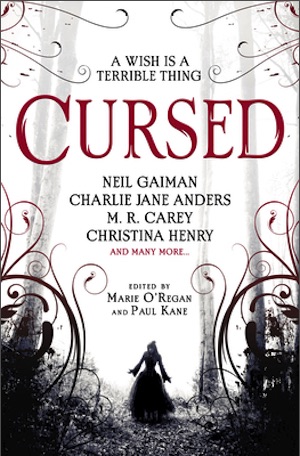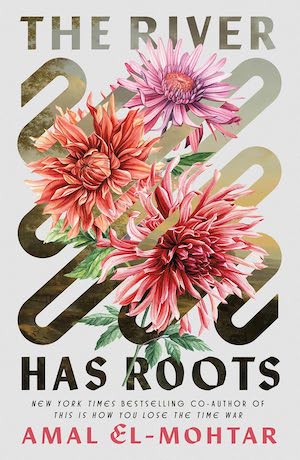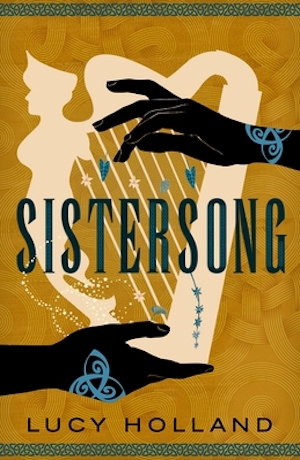“The Cruel Sister” is a folkloric tale handed down through ballads, which pops up in various iterations and under titles including “The Singing Bone,” “Twa Sisters,” or “The Bonny Swans.” The tale is a sad story of sororicide, usually motivated by sibling rivalry, romantic rivalry, jealousy, or some toxic combination thereof.
If you don’t know the story, here are the basics:
Two sisters, daughters of a king (or a farmer… it doesn’t really matter) grow to young womanhood. In most versions, they are both attracted to the same young man, and have been competing for his attention. One day, they go for a walk together by the river and the elder sister pushes the younger in, drowning her.
When the murdered sister’s body is fo…
“The Cruel Sister” is a folkloric tale handed down through ballads, which pops up in various iterations and under titles including “The Singing Bone,” “Twa Sisters,” or “The Bonny Swans.” The tale is a sad story of sororicide, usually motivated by sibling rivalry, romantic rivalry, jealousy, or some toxic combination thereof.
If you don’t know the story, here are the basics:
Two sisters, daughters of a king (or a farmer… it doesn’t really matter) grow to young womanhood. In most versions, they are both attracted to the same young man, and have been competing for his attention. One day, they go for a walk together by the river and the elder sister pushes the younger in, drowning her.
When the murdered sister’s body is found by a musician, he decides that her hair and bones will make a lovely harp (I assume his aesthetic sensibility is somewhat morbid, but hey, finders keepers, I guess). He creates the body of the harp from her bones and strings the harp with her golden hair. As soon as it’s completed, the harp begins to sing on its own, telling the tale of the younger sister’s murder.
In most versions, the musician finds his way to the murdered sister’s family, usually just in time to perform at some big celebration—often the elder sister’s wedding—and then the harp reveals the terrible secret directly to the family.
In some versions of the tale, the action centers around two brothers instead, and in that case, a single bone is usually made into a flute which then spills the secret of the murder. For whatever reason, the murder in this version is usually motivated by greed, rather than sexual jealousy—usually there’s treasure involved and one brother wants it all to himself, go figure!
The basic story of the ballad is simple and timeless, leaving storytellers room to fill in the bare bones (if you will) in their own ways. There’s certainly plenty to unpack in these meaty modern retellings, which grapple with the complex relationships between sisters (especially those just coming of age into adulthood), exploring dysfunctional family dynamics, romantic obsession, and the petty, poisonous power of jealousy.
**“Cruel Sisters” by Marie Brennan **
(From Daily Science Fiction) This sharp little work of flash fiction explores how a magical harp comes to cast (apparently unquestioned) allegations against the royal family. The narrator sneaks into the chapel where the harp is stored, and the harp recognizes her as the murderer. Their conversation turns the story sideways, and given how short it is, I won’t say more for fear of spoiling it. Brennan said she wrote it to account for a discrepancy in singer-songwriter Loreena McKennitt’s version of the tale, and although Daily Science Fiction is no longer up and running, you can still dig up Brennan’s story on the Wayback Machine.
**“Cruel Sisters” by Patricia C. Wrede from **Book of Enchantments

Wrede explains that she came across one version of the story in which a king had three daughters, the middle of whom was not mentioned again after the first line of the story, but it sparked her imagination and thus Meg was created—a middle sister trying to be the peacemaker between her two impetuous and impulsive sisters. In Wrede’s skillful middle-grade version of the tale, the eldest and youngest have a falling out over William, a courtier who pledges himself to eldest sister Anne…until youngest sister Eleanor comes of age, at which point his affections prove fickle. Soon after, Eleanor drowns while on a walk with Anna, and Meg finds herself torn, wondering about the truth of the matter. Even after the harper comes to court with his macabre instrument which puts the blame on Anne, Meg remembers that Eleanor was always prone to lying, and doesn’t see how death would have changed that inclination. The magic harp isn’t the final arbiter of truth in Meg’s mind, although the song it plays wreaks its damage nonetheless.
“The Harp that Sang” by Gregory Frost

(From Swan Sister: Fairy Tales Retold, edited by Ellen Datlow and Terri Windling) This one is a fairly straightforward but lovely retelling; in his endnotes, Frost explains that he was inspired first by the ballad “Cruel Sister” as performed by Pentangle. Karla betrays her sister Beatrice, but puts off her father’s suspicions by making a show of mourning her sister. When harper Antonio finds Beatrice’s bones, tangled with her hair, he creates a harp from the bones and ties the golden hair around each string to make it glitter in the sunlight. Soon word of the (literally) hauntingly beautiful harp music catches the attention of the local lord, who invites the harper to play for his daughter’s wedding—as soon as Karla starts her walk down the aisle, the harp begins playing on its own, and Karla’s sister (and fate) finds her.
**“Listen” by Jen Williams **

(From Cursed, edited by Marie O’Regan and Paul Kane) Williams offers a twist on the familiar story, but it clearly borrows from the, ahem, bones of the traditional tale. Erren Keeneye wanders the world, begging supper in return for the playing of her delicate pipes. She’s bound after being cursed by a wood-spirit, having shot the spirit’s brother while he wore the form of a beautiful deer. The pipes are made from the deer’s bones, and when Erren plays them, they call the dead back from shadows to accuse their murderers and wrongdoers, at which point Erren generally slips away in the midst of the resulting chaos and bloodshed. Her years of wandering eventually lead her to somewhere more recognizably modern, and then beyond, and the story tips neatly into other mythology at its conclusion.
The River Has Roots** by Amal El-Mohtar**

Thistleford sits on the edge of a faerie realm called Arcadia, where magic comes from grammar, and the River Liss flows past Thistleford as it leaves Arcadia. The Hawthorn family tends the willows that line the river; the young daughters of the family, Esther and Ysabel, tend to the Professors, two giant willow trees that mark the border of the realms, by singing ballads to them every day. Esther and Ysabel are not at odds, here, but a jilted lover tears them apart anyway. Rich with allusions to other ballads and fairy tales and accompanied by gorgeous illustrations, El-Mohtar coaxes this ancient tale through a new course.
Sistersong** by Lucy Holland**

Although there are hints that the turn in this tale involves our ballad, it’s not the whole story but rather a main thread in Holland’s novel, which braids the story of the sisters with Celtic and Arthurian legends leading up to a pivotal historical moment in ancient Britain. In alternating point-of-view chapters, siblings Riva, Keyne, and Sinne grapple with various changes to their world as well as their own dreams and desires. As the children of King Cador, all three are subject to the expectations of family and society, and all three chafe against the restrictions. If you already know the story of the Cruel Sister, it takes a long time to unfold, but Holland uses this tension to deliver a complex and delicate portrait of family love and betrayal.
What other versions of this rather macabre tale have you come across? Share your favorites in the comments!